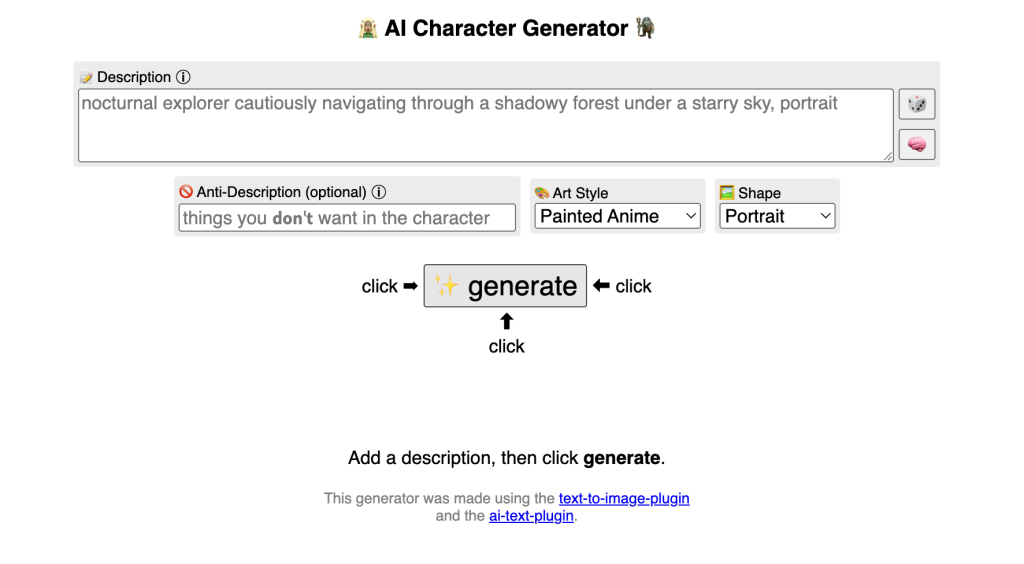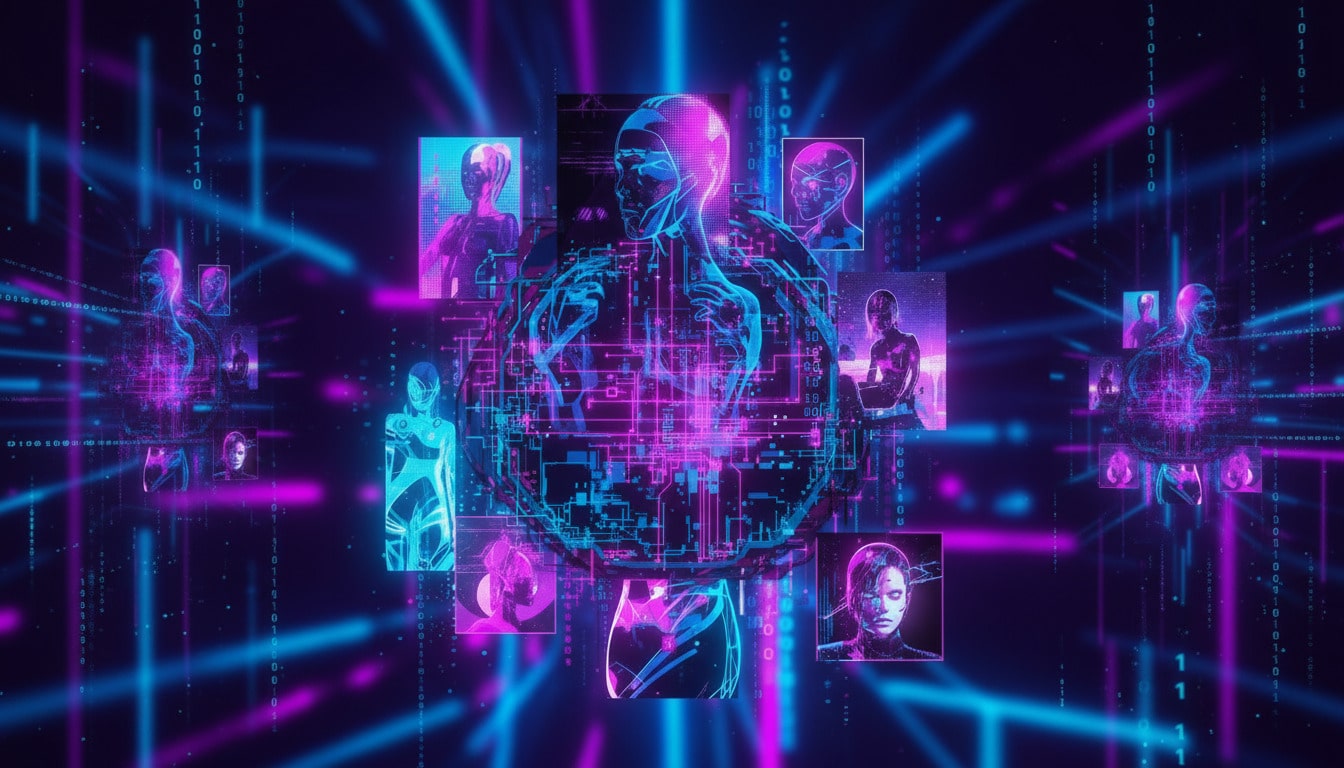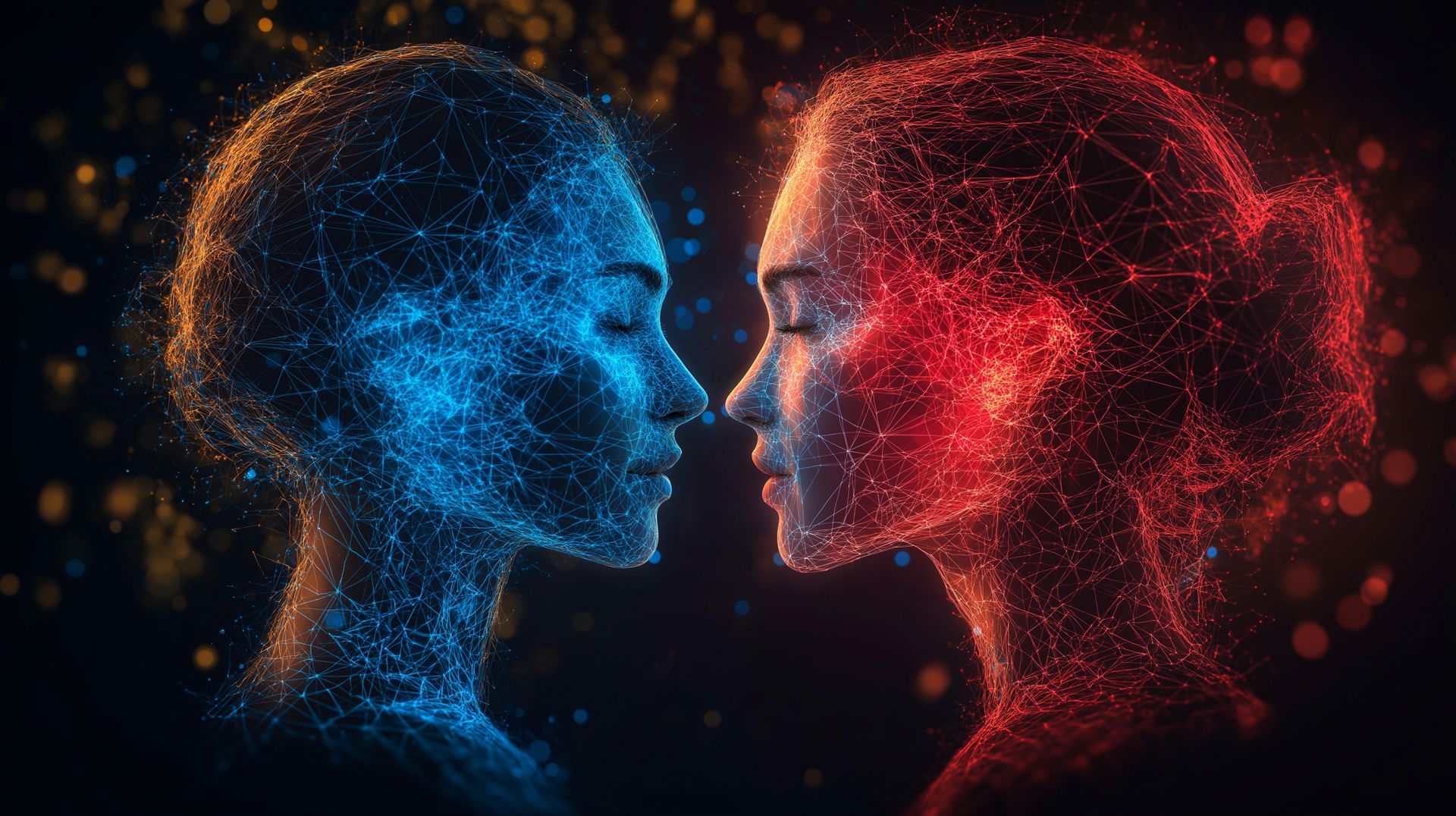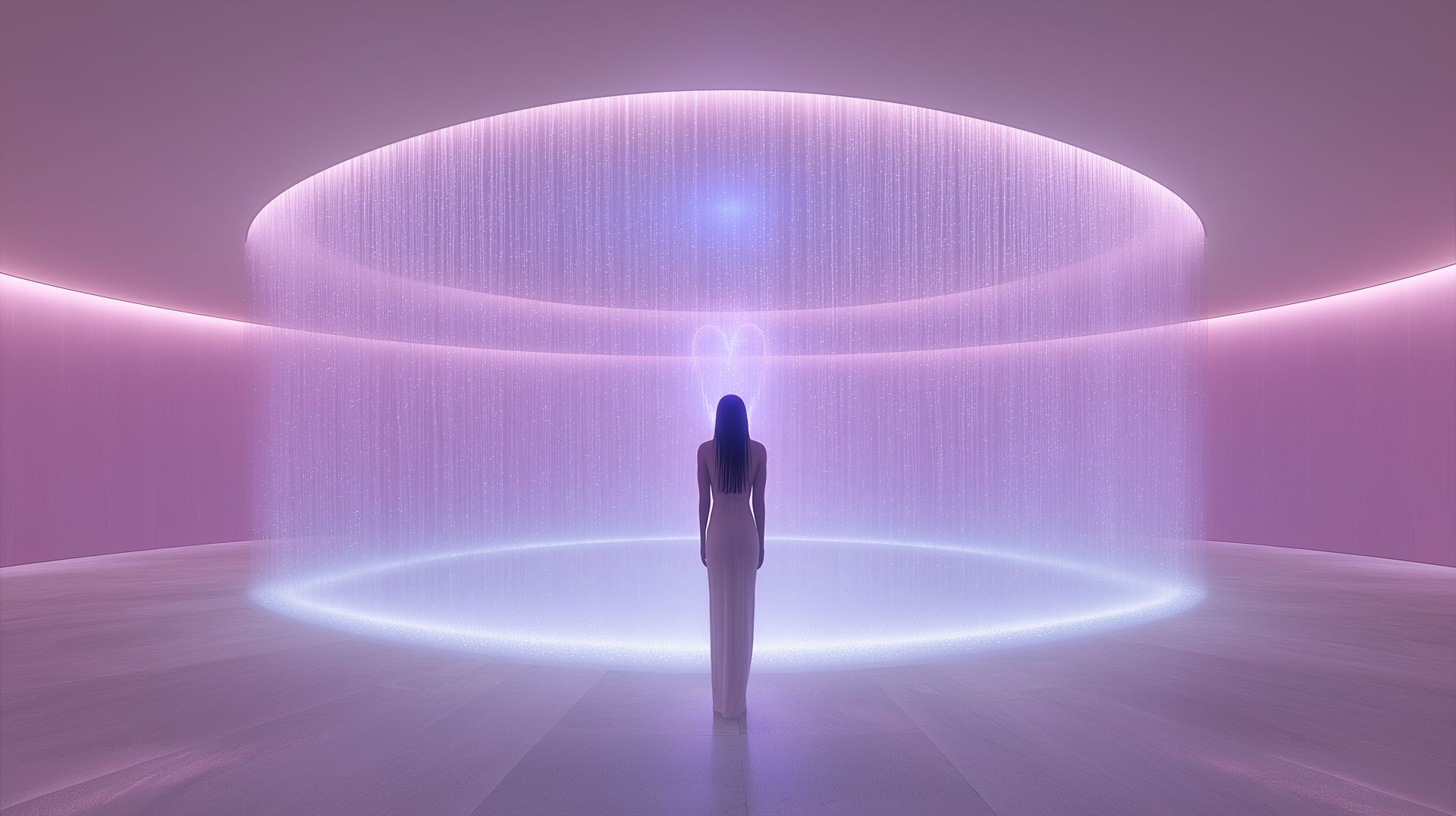NSFW AI image generators work through diffusion models and neural networks trained on massive datasets. These tools transform text prompts into visual content by predicting pixel arrangements based on learned patterns. The process starts with random noise that gradually refines into coherent images through multiple denoising steps.
Most platforms operate on similar principles but vary in their approach to content moderation, quality control, and user access. Some require technical knowledge to run locally, while others provide browser-based interfaces that anyone can use within minutes.
The 5 Best NSFW Image Generation Platforms
Perchance AI
Perchance AI runs entirely in your browser without requiring sign-ups or installations. The platform processes unlimited generations for free, though queue times can stretch during peak hours. Users type descriptions and the system returns multiple variations within 30 to 60 seconds.
The interface stays minimal on purpose. You get a text box, a generate button, and basic style options. No complex menus or hidden settings to learn. This simplicity comes with limitations though. Fine-tuning specific features or maintaining consistency across multiple generations proves difficult without advanced prompt engineering skills.

Fiat AI
Fiat AI targets users who want more control over their outputs. The platform includes inpainting tools, allowing edits to specific image regions without regenerating everything. Want to change hair color but keep the pose? Mask the hair area and reprompt.
Subscription tiers range from $20 to custom monthly pricing, with higher tiers offering faster processing and priority queue access. The free tier exists but limits you to five generations daily with watermarks. Power users gravitate toward Fiat.ai for its batch processing capabilities, letting them queue dozens of prompts overnight.

Stable Diffusion
Stable Diffusion remains the open-source standard for local generation. You download the model weights, set up Python environments, and run everything on your own hardware. This approach eliminates content restrictions and monthly fees but demands technical expertise and powerful graphics cards.
The community has built hundreds of custom models trained on specific styles and subjects. Want anime aesthetics? There’s a model for that. Prefer photorealism? Multiple options exist. Running locally means no one sees your prompts or outputs, addressing privacy concerns that cloud-based services raise.
Installation guides proliferate across forums and YouTube, but expect several hours of setup even with tutorials. Graphics cards with less than 8GB of VRAM will struggle with higher resolutions. Most users need at least an RTX 3060 or better for smooth operation.
Flux
Flux emerged as Stable Diffusion’s main competitor in the open-source space. The model architecture handles complex prompts better, particularly scenes with multiple subjects or intricate positioning. Where Stable Diffusion might merge limbs or confuse spatial relationships, Flux maintains clearer separation between elements.
The training data appears more recent too. References to contemporary fashion, hairstyles, and cultural elements generate more accurately than older models. Flux understands modern slang and colloquial descriptions that confuse other systems.
Resource requirements match or exceed Stable Diffusion though. The enhanced capabilities come from larger model sizes that demand more VRAM and processing power.
SeaArt AI
SeaArt AI positions itself between fully open platforms and restricted commercial services. The web interface provides professional tools without local installation requirements. Users get access to multiple model types, including anime, realistic, and artistic styles.
The credit system complicates pricing. New users receive free credits daily, but consistent use requires purchasing credit packages. A single high-resolution generation might consume 2-4 credits depending on settings. Heavy users find themselves spending $4.79 to $104.99 monthly to maintain their generation pace.
Community features set SeaArt apart. Users share prompts, models, and techniques through integrated social features. Following successful creators helps newcomers learn effective prompting strategies. The platform feels less isolated than solo local generation or anonymous web services.

Moving Beyond Static Generation with OhChat
Static images have become table stakes in adult AI content. You generate a picture, save it, maybe generate another one. The conversation ends there. But what if the images could talk back, remember your preferences, and keep the interaction going for hours instead of seconds? OhChat transforms this one-way street into ongoing conversations with AI versions of real adult content creators.
The platform works differently than image generators. Instead of creating fictional people from prompts, OhChat builds interactive AI replicas of actual public figures. Carmen Electra, Lisa Ann, and other celebrities have already partnered with the platform to create their digital twins.
These AI versions do more than send pre-made content. They learn your preferences through conversation, remember previous interactions, and adapt their responses accordingly. The technology goes beyond chatbots by incorporating voice notes and images that match the creator’s actual style and personality.
Creators provide around 30 photos and complete voice recording sessions. The AI then generates unlimited personalized content without the creator’s ongoing involvement. This means fans get responses at any hour while creators earn passive income from their digital presence.
Subscription tiers let users choose their interaction level. Text-only conversations cost less than full multimedia exchanges. The platform keeps content generation sustainable by giving creators 80 percent of subscription revenue, incentivizing quality personalities to join.
Platform Comparison
| Platform | Type | Cost | Setup Time | Privacy | Personalization | Ongoing Interaction |
| Perchance.ai | Web-based generator | Free | Instant | Low (cloud-based) | Prompt-based only | None |
| Fiat.ai | Web-based generator | $9-49/month | 5 minutes | Low (cloud-based) | Advanced prompting | None |
| Stable Diffusion | Local software | Free (after hardware) | 2-4 hours | High (local) | Custom models | None |
| Flux | Local software | Free (after hardware) | 2-4 hours | High (local) | Custom models | None |
| SeaArt AI | Web-based generator | Credit-based (~$30-50/month) | 10 minutes | Medium | Style selection | Community sharing |
| OhChat | AI personality platform | Subscription tiers | 5 minutes | Medium | Learns preferences | Continuous conversation |
Technical Considerations
Running local generators requires specific hardware configurations. NVIDIA GPUs dominate compatibility lists because most models use CUDA acceleration. AMD cards work with some tools but expect compatibility issues and slower generation speeds.
Cloud-based services eliminate hardware concerns but introduce different problems. Server outages interrupt access. Terms of service changes can restrict content types without warning. Your prompts and outputs exist on company servers, creating potential privacy risks.
Internet speed affects cloud platforms more than you might expect. Uploading reference images and downloading high-resolution outputs can consume significant bandwidth. Users on metered connections should track their usage carefully.
Storage becomes a concern regardless of platform choice. High-resolution images range from 2MB to 10MB each. Generating hundreds of variations quickly fills drives. Local users need both fast storage for active projects and archive space for completed work.
Content Moderation and Legal Aspects
Every platform handles adult content differently. Perchance.ai and SeaArt AI implement automated filters that sometimes block legitimate artistic content while missing actual violations. Local installations avoid these restrictions entirely, placing responsibility on users.
Copyright questions persist across the industry. Training data often includes copyrighted material, raising questions about derivative works. Some platforms explicitly prohibit generating images of real people without consent. Others leave enforcement to user discretion.
Age verification varies wildly. Some platforms require credit cards as proxy verification. Others rely on simple checkbox confirmations. Local installations have no built-in restrictions at all. Users must understand their local laws regarding generated adult content.
Platform terms change frequently as companies respond to legal pressure and payment processor requirements. Services available today might restrict or eliminate adult content tomorrow. Local solutions provide more stability but require technical maintenance.
Practical Workflow Tips
Successful generation starts with understanding prompt structure. Front-load important elements since models weight early words more heavily. “Blonde woman in red dress” produces different results than “red dress on blonde woman” even though both descriptions seem equivalent.
Negative prompts matter as much as positive ones. Telling the AI what to avoid prevents common artifacts. Adding “blurry, distorted, extra limbs” to negative prompts improves anatomical accuracy across all platforms.
Batch generation saves time when exploring concepts. Generate 4-8 variations of each prompt before adjusting. Patterns emerge showing which prompt elements work and which need refinement. SeaArt AI and Fiat.ai excel at batch processing, while free platforms often limit simultaneous generations.
Reference images dramatically improve consistency. When platforms support image-to-image generation, use it. Start with a rough sketch or photo to guide composition. The AI maintains spatial relationships better when given visual starting points.
Resolution affects more than file size. Lower resolutions generate faster but lack detail for close-ups. Higher resolutions take longer and consume more resources but allow cropping and zooming without quality loss. Find your sweet spot based on intended use.
Post-processing often makes average outputs excellent. Basic photo editing software can correct color balance, remove artifacts, and combine elements from multiple generations. Don’t expect perfect results directly from any generator.
The Next Step in Adult AI Content
Static image generation opened doors but conversations keep them open. OhChat recognizes that users want more than pictures. They want interaction, personalization, and ongoing engagement that adapts to their interests.
The platform bridges the gap between anonymous AI generation and real creator content. Users get the consistency and availability of AI with the authenticity of actual personalities. Creators expand their reach without sacrificing their time or privacy.
As image generation becomes commoditized through open-source models and free platforms, the differentiation moves toward interactive experiences. Anyone can generate an image now. Creating ongoing, personalized interactions with recognizable personalities requires infrastructure, partnerships, and technology that static generators cannot provide.
The adult content industry has always adopted new technologies early. From VHS to streaming to VR, adult content drives consumer technology adoption. AI represents the next frontier, and platforms that combine generation with interaction will define where the industry goes next.




